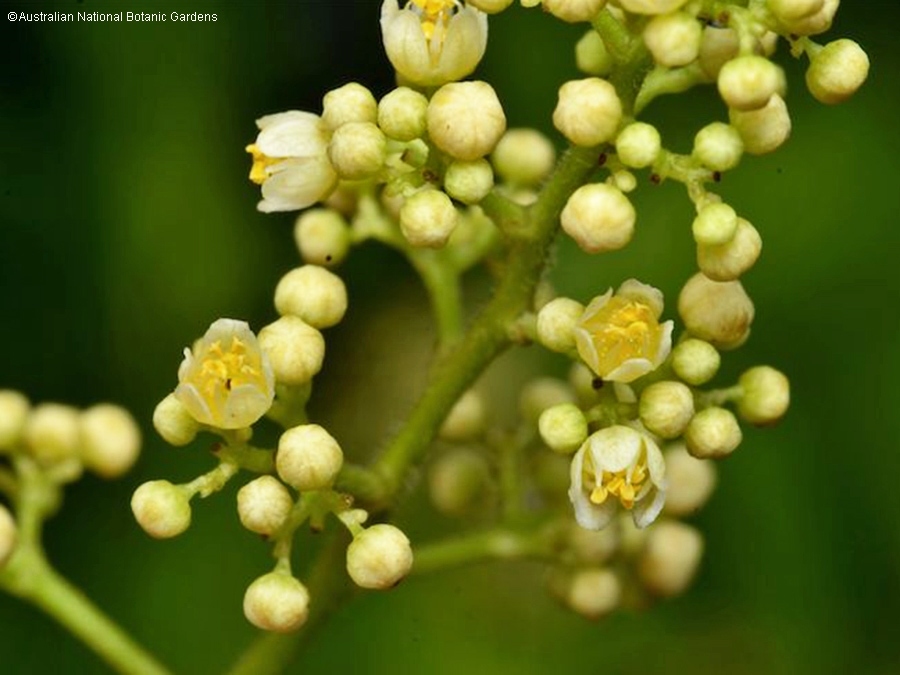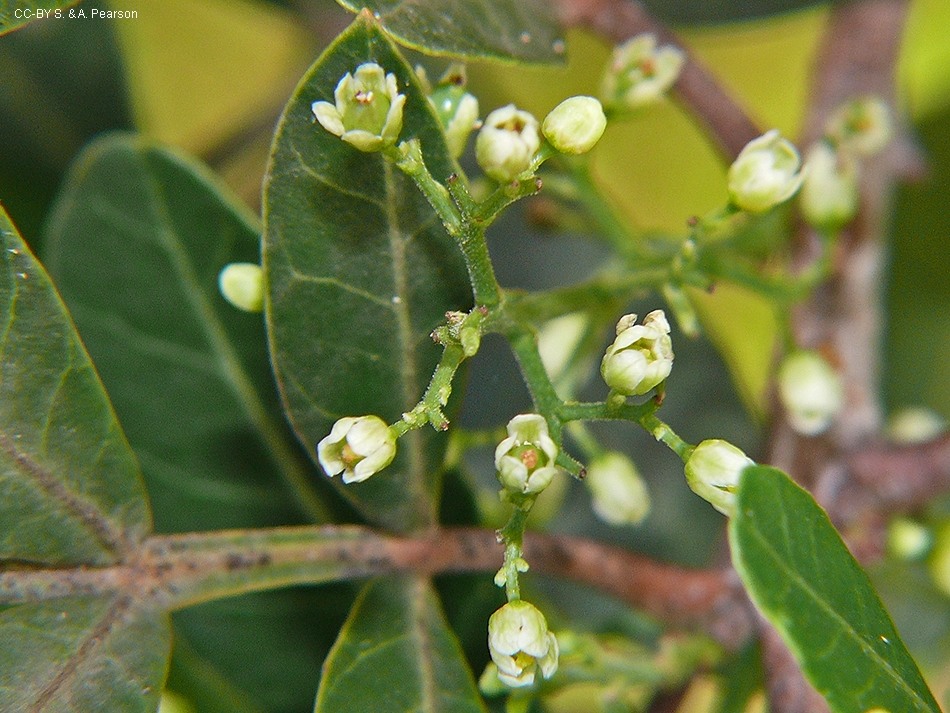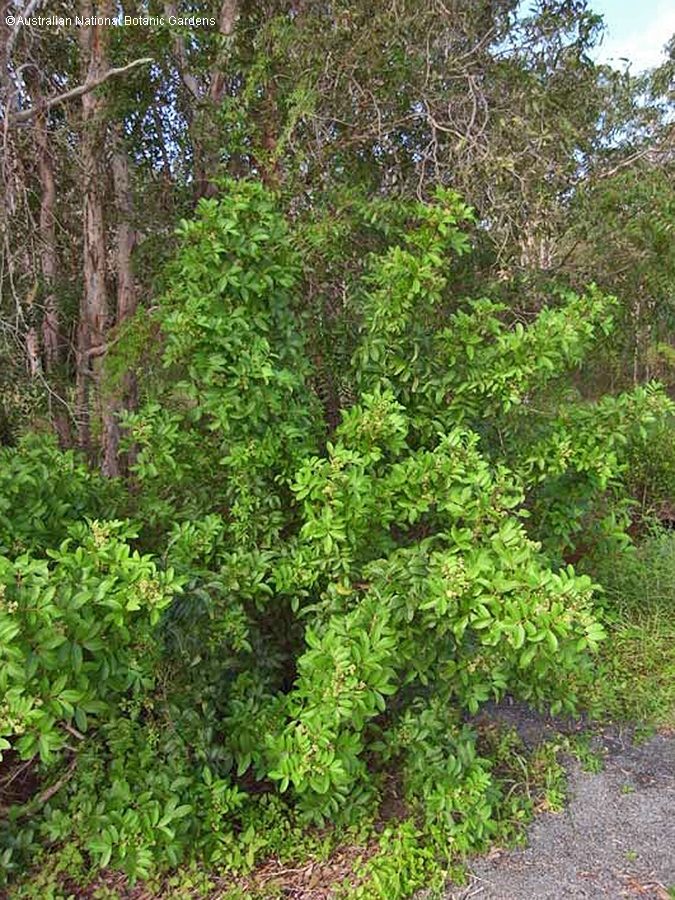Australian Tropical Rainforest Plants - Online edition
Schinus terebinthifolius Raddi





Raddi, G. (1820), Memorie di Matematica e di Fisica della Societa Italiana della Scienze Residente in Modena. Parte contenente le Memorie di Fisica 18(2): 399. Type: (not cited).
Broad-leaf Pepper Tree
Shrub or small tree to 15 m high; crown spreading rather than pendulous, sometimes multi-stemmed. Young stems with distinct lenticels, the bark of older stems dark brown or blackish in colour, very rough and deeply ridged. Clear watery exudate present when twigs or petiole broken. Young stems hairy with whitish hairs, stems becoming hairless with age.
Leaves compound, alternate. Stipules absent. Petiole 2-3.5 cm long, sometimes slightly winged. Leaflets (3-) 5-11, opposite, pinnately compound with larger terminal leaflet, rhachis sometimes winged especially below leaflet attachment. Lateral petiolule absent to 3 mm long, terminal petiolule absent to 18 mm long. Leaflet blades elliptic to oblong-ovate, 1.5-8 cm long, 1-3 cm wide, base obtuse or cuneate, margins entire (rarely finely toothed or crenate in juveniles), apex acute to obtuse and minutely apiculate. Lateral veins 10-14 pairs. Upper surface hairless, lower surface hairless or with very sparse hairs. Translucent dots sometimes present, large and scattered; leaves have a strong pepper smell when crushed.
Inflorescences terminal or axillary in upper axils, flowers in panicles. Flowers unisexual and plants dioecious, some bisexual flowers present, actinomorphic, 4- or 5-merous. Pedicels 0.7-1mm long. Sepals imbricate, fused only shortly at base, c.1 mm long, glabrous or sparsely hairy. Petals free, ovate, c. 1-1.5 mm long, glabrous, white. Male flowers: stamens 8 or 10 (twice the number of petals), filaments free, stamens alternating with petals up to twice as long as those opposite petals, disk present and saucer shaped; rudimentary ovary present. Female flowers: staminodes present 8-10, disk cup shaped, ovary superior (3-locular), glabrous; style short; stigma 3-lobed.
Features not available.
This profile information and associated coding has been adapted from Harden et al. (2014), Green (1994) and Weeds of Australia for Biosecurity Queensland (2016).





